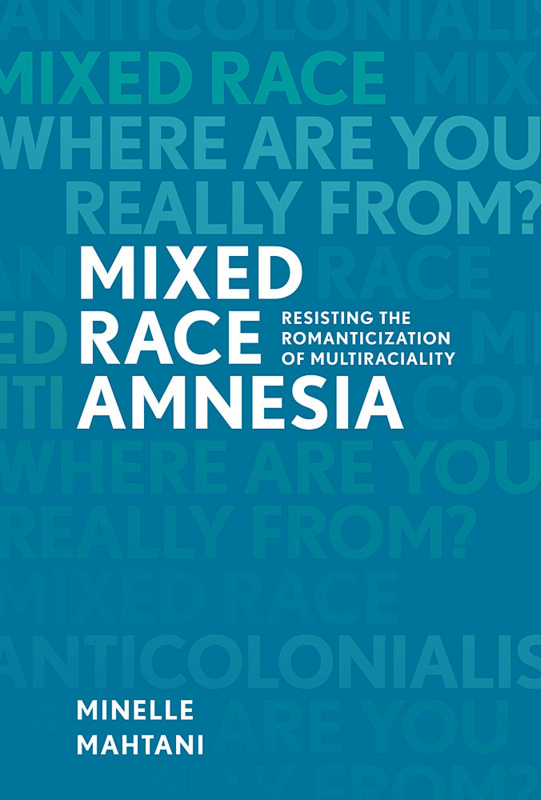Another layer of blackness: theorizing race, ethnicity, and identity in the U.S. black public sphere
University of Iowa
2013
277 pages
Patrick B. Oray
A thesis submitted in partial fulfillment of the requirements for the Doctor of Philosophy degree in American Studies in the Graduate College of The University of Iowa
While many studies of U.S. immigration highlight the diversity within other racial and ethnic groups, scholarly attention to the significance of ethnicity among black people in this country is still sorely underdeveloped. This dissertation project explores how black identities are constructed not only through the prism of race in the U.S. context, but also through other social dynamics that operate “in the shadow of race,” such as differences in class, color, country of origin, and circumstances of migration. Instead of a singular black identity fueled by our political discourses and popular culture, my project treats “blackness” as a floating signifier that is constructed both within the racial organization of the U.S. nation-state and among the peoples of the black diaspora within its borders. In short, blackness is a matter that has become national, international, and transnational in scope.
Ethnicity and its implications for how we think about black identity and group representation in U.S. society is the other “layer of blackness” this dissertation addresses. The formation and reshaping of American identity among various immigrant groups have historically involved complicated relationships between race and ethnicity, two concepts scholars have used to articulate group identities in the U.S. The history of U.S. racial and ethnic relations reveals the complicated processes through which some social groups have been able to establish their place in the American mainstream by adapting to the cultural and institutional norms established by mainstream white society. Non-white immigrant groups have been forced to find their American identities on the margins of U.S. society because of their purported inability or unwillingness to assimilate to established cultural and institutional norms. Sometimes this alienation from the American mainstream takes on a purely racial dimension. At other times, the prejudices of U.S. society are directed at particular ethnic groups.
But in spite of the status ascribed to them, these immigrants have also proven to be empowered agents in their implicit and explicit critiques of the U.S.’s social order. Historically, non-white immigrants in the U.S. have demonstrated the power to question, disrupt, and resist cultural and institutional forms of discrimination even as they are incorporated into them.
My interrogation of black ethnic identity and what it brings to bear on how we define blackness in the U.S. begins by asking what cultural capital black immigrants bring with them in their sojourn to America rather than assuming what is lost in the process of their incorporation into U.S. race relations. Patterns of immigration, return migration and circular migration that have come to characterize the experience of many foreign-born blacks in the U.S., as well as the circulation of ideas, culture, and history between sending and receiving countries are all issues germane to the process of black immigrant incorporation and black ethnic identity in the U.S. As such, the argument I proffer in my dissertation project is this: because of the myriad processes at play in formulating black racial and ethnic identities in America (i.e., historically established structures of race as well as an unprecedented surge in foreign-born black migration this country)-how we define blackness in the U.S. context is more fruitfully theorized as a matter that is at once national, international, and transnational in scope. It is at the nexus of these fronts that the historical and cultural constructions of blackness are currently defined among the diversity of black people in the U.S.
TABLE OF CONTENTS
- I. BLACK LIKE WHOM?: AN INTRODUCTION TO RACE, CLASS, AND ETHNICITY IN THE UNITED STATES BLACK PUBLIC SPHERE
- 1.1 Ethnicity as “Another Layer of Blackness”
- 1.2 Theorizing the U.S. Black Public Sphere
- 1.3 Uncovering an Ethnic Layer of Blackness in the U.S. Black Public Sphere
- II. “NO BOOTBLACK HAITIANS:” BLACK COSMOPOLITAN CONSCIOUSNESS AND THE U.S. OCCUPATION OF HAITI (1915-1934)
- 2.1 The Roots of Black Cosmopolitan Consciousness in the U.S.: The African-American Press Response to the Occupation
- 2.2 Cosmopolitanism and the U.S. Black Public Sphere: The Occupation, The New Negro Movement, and the Harlem Renaissance
- 2.3 The Limits of Cosmopolitanism in the U.S. Black Public Sphere
- III. SOMEWHERE BETWEEN “BROTHERS” AND “OTHERS” (REPRISE): AFRICAN-AMERICANS, BLACK IMMIGRANTS, AND THE POLITICS OF PLACE
- 3.1 African Americans and the Transformation of the “Chocolate City” of Oakland, California
- 3.2 “Challenges to “Umoja” (Unity): The Close Encounters of Black Americans and Black Immigrants in Oakland
- 3.3 The “Blues City” Finds a New Identity“
- IV. RACE AND REPRESENTATIONS OF BLACKNESS IN THE ERA OF OBAMA
- 4.1 Obama’s Presidential Conceit: A “Black Man” Who is Also “Everyman”
- 4.2 “Articulate, Bright, and Clean”: Barack Obama and the Melodrama of Blackness in Campaign ‘08
- 4.3 Obama Walks the Tightrope Between “Race” and “Nation”
- V. CONCLUSION: W(H)ITHER THE BLACK PUBLIC SPHERE?: RACE, ETHNICITY AND IDENTITY IN THE ERA OF OBAMA
- BIBLIOGRAPHY
Read the entire dissertation here.


